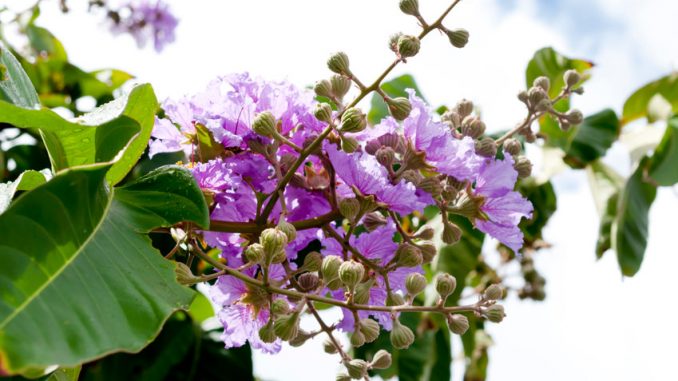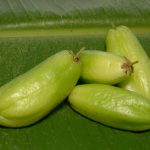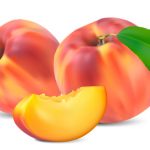
Banaba extracts are taken from the leaves of a tree species, Lagerstroemia speciosa L. which is in the Crape Myrtle family. The leaves have been used for centuries as a traditional fold medicine for the treatment of kidney disease and diabetes especially diabetes mellitus (Type-2 diabetes).
It’s common name is Pride of India. The tree is found throughout South-East Asia and primarily India, Sri Lanka and Malaysia.
The main active ingredients is corosolic acid which is a terpenoid which stimulates the transport of glucose across cell membranes. The general medical benefits are mitigating for insulin unresponsiveness of cells by increasing their sensitivity to this particular hormone (Hou et al., 2009). The implication is its ability to lower blood sugar levels and is being thoroughly investigated for this role.
Another 40 odd beneficial compounds are known including ellagic acid which is also found in amla.
It also has very potent antioxidant properties which means that it can prevent cellular damage from free radicals.
A very important review of the latest medicinal properties is available (Al-Snafi, 2019).
Componentry
Ethyl acetate extracts of Banaba leaf contain six pentacyclic triterpenes – oleanolic acid, arjunolic acid, asiatic acid, maslinic acid, corosolic acid and 23-hydroxyursolic acid (Hou et al., 2009).
Main Conditions Treated
- Diabetes
- Hypertension (elevated blood pressure)
- Hypercholesterolaemia (high cholesterol)
- Kidney disease
- Metabolic syndrome
- Urinary tract infections
Corosolic acid And Diabetes
Corosolic acid has inhibitory activity against alpha-glucosidase which is implicated in the treatment of diabetes. α-Glucosidase is a key carbohydrate hydrolase that regulates blood glucose by specifically hydrolyzing 1,4-α-glucopyranosidic bond to produce α-glucose.
Overall one of the key strategies in managing diabetes is to inhibit the breakdown of carbohydrates generally into glucose. A number of candidate molecules including corosolic acid have been tested
References
Al-Snafi, A. E. (2019). Medicinal value of Lagerstroemia speciosa: An updated review. International Journal of Current Pharmaceutical Research, 11(5), pp. 18-26.
Hou, W, Li Y, Zhang Q, Wei X, Peng A, Chen L, Wei Y. (2009) Triterpene acids isolated from Lagerstroemia speciosa leaves as alpha-glucosidase inhibitors. Phytother Res. May;23(5):614-8. doi: 10.1002/ptr.2661. PMID: 19107840. (Article)


Leave a Reply